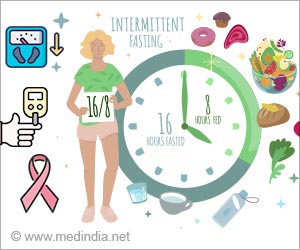Long Covid often remains undiagnosed, leaving many unaware of their condition.
- Many Long Covid cases remain undiagnosed, delaying treatment
- Minority groups face higher prevalence and lack of awareness
- Early diagnosis is key to managing symptoms effectively
Exploring Long Covid Prevalence and Patient Uncertainty by Sociodemographic Characteristics Using GP Patient Survey Dat
Go to source).
Nearly 1 in 10 people are unsure if they have Long Covid #longcovid #covid19 #medindia’
What Is Long COVID?
Long COVID is a condition in which individuals experience lingering symptoms long after their initial COVID-19 recovery. According to the World Health Organization (WHO), Long COVID is defined as symptoms that continue or develop three months after the acute phase of the infection and last for at least two months without any alternative diagnosis (2✔ ✔Trusted SourceLong COVID Basics
Go to source).
Symptoms of Long COVID
Long COVID can present with a wide variety of symptoms, which may fluctuate over time. Some of the most commonly reported symptoms include (3✔ ✔Trusted SourcePrevalence of ongoing symptoms following coronavirus (COVID-19) infection in the UK
Go to source).
- Fatigue and exhaustion: Persistent tiredness that doesn't improve with rest
- Breathing difficulties: Shortness of breath or ongoing cough
- Brain fog: Trouble with memory, concentration, and mental clarity
- Joint and muscle pain: Lingering aches or stiffness
- Heart issues: Chest pain, palpitations, or irregular heartbeat
- Sleep problems: Insomnia or disrupted sleep patterns
- Loss of taste and smell: Anosmia or parosmia lasting for months
- Gastrointestinal issues: Nausea, diarrhea, or stomach pain
How Common Is Long COVID?
A recent report revealed that nearly one in ten people are unsure whether they have Long COVID. According to the Office for National Statistics (ONS), an estimated 5–10% of COVID-19 survivors develop symptoms that last for at least three months. The ambiguity arises because Long COVID symptoms often overlap with other conditions, making it challenging for individuals to identify whether they are experiencing post-COVID effects or unrelated health issues.Who Is at Risk of Developing Long COVID?
While Long COVID can affect anyone, certain groups are more vulnerable:- Severe COVID cases: Individuals who were hospitalized or required intensive care are more likely to experience lingering symptoms
- Women and middle-aged adults: Research shows that women aged 35–49 are more prone to Long COVID
- Pre-existing conditions: People with chronic illnesses such as diabetes, heart disease, or asthma are at higher risk
- Unvaccinated individuals: Studies indicate that vaccination reduces the risk of developing Long COVID by lowering the severity of the initial infection
- Minorities and disadvantaged groups: Studies reveal that minoritized groups experience a higher prevalence of Long COVID and are more likely to be uncertain whether they have the condition. This highlights the need for greater public awareness and better healthcare distribution according to need.
Why Are People Unsure About Long COVID?
The recent report highlighting that nearly one in ten individuals are unsure if they have Long COVID reveals multiple challenges in identifying the condition:- Symptom overlap: Long COVID symptoms mimic other conditions, making self-diagnosis difficult. Fatigue, brain fog, and shortness of breath are also common in post-viral fatigue syndromes, making it hard to differentiate
- Delayed symptom onset: Some individuals experience symptoms weeks after their recovery, making it difficult to connect them to the original COVID infection
- Lack of testing and awareness: Unlike the acute infection phase, there is no definitive test for Long COVID, which leads to underdiagnosis and confusion
- Healthcare disparities: Minoritized groups and people from lower socioeconomic backgrounds often face barriers to healthcare access, leaving them uncertain about their condition
Diagnosis and Detection: How Is Long COVID Identified?
There is no single diagnostic test for Long COVID. Diagnosis is based on symptom evaluation, patient history, and ruling out other possible conditions. Common methods include:- Medical history review: Doctors assess the patient’s COVID-19 history and symptoms to determine if they align with Long COVID patterns
- Blood tests and imaging: Although no definitive biomarker exists, blood tests and imaging scans can help rule out other causes of persistent symptoms
- Specialist referrals: Patients with suspected Long COVID are often referred to pulmonologists, neurologists, or cardiologists for further evaluation
Managing Long COVID: Treatment and Care Strategies
While there is no universal cure for Long COVID, treatments focus on managing symptoms and improving quality of life.Medical Interventions
- Physical therapy: Helps individuals regain strength and mobility, especially in cases of muscle weakness or fatigue
- Medication: Prescribed to treat specific symptoms like pain, inflammation, or respiratory issues
- Mental health support: Counseling and cognitive therapy can address brain fog, depression, and anxiety
Lifestyle Changes
- Balanced diet: A nutrient-rich diet boosts immunity and supports recovery
- Pacing activities: Managing fatigue through gradual activity increases, avoiding overexertion
- Hydration and rest: Staying hydrated and getting sufficient sleep promotes healing
Greater Awareness and Early Action Are Crucial
Long COVID is a complex and often misunderstood condition. With nearly one in ten people unsure whether they have it, the need for greater public awareness and accessible healthcare support is evident. Early recognition, proper management, and ongoing research can help those affected regain their health and quality of life.If you or someone you know is experiencing persistent symptoms after COVID-19, don't ignore them—consult a healthcare professional for proper evaluation and support.
References:
- Exploring Long Covid Prevalence and Patient Uncertainty by Sociodemographic Characteristics Using GP Patient Survey Data - (https://pubmed.ncbi.nlm.nih.gov/40097195/)
- Long COVID Basics - (https://www.cdc.gov/covid/long-term-effects/index.html)
- Prevalence of ongoing symptoms following coronavirus (COVID-19) infection in the UK - (https://www.ons.gov.uk/peoplepopulationandcommunity/healthandsocialcare/conditionsanddiseases/bulletins/prevalenceofongoingsymptomsfollowingcoronaviruscovid19infectionintheuk/30march2023)
Source-Medindia










